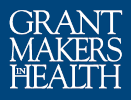Dr. Alister Martin, Emergency Physician, Massachusetts General Hospital; Assistant Professor, Harvard Medical School; Founder, Vot-ER
Dr. Joseph R. Betancourt, President, The Commonwealth Fund; Former Senior Vice President for Equity and Community Health, Massachusetts General Hospital
August marks Civic Health Month, a time to showcase the link between voting and health and celebrate efforts that ensure every voter can support their community’s health at the ballot box. At the same time, the United States is grappling with a health care system ranked 37th globally despite consuming 17 percent of the country’s GDP. With 26 million Americans uninsured and 43 million underinsured, the gap in access to care continues to widen. This crisis will deepen as critical ACA subsidies expire at the end of 2025, potentially leaving 3.8 million more Americans without coverage, in addition to new federal cuts to Medicaid and changes to how coverage is accessed through the health insurance marketplace, which could result in as many as 20 million Americans losing their health insurance.
This moment demands urgent action. With voting restrictions proliferating in states across the country and traditional health equity funding under pressure, healthcare settings represent one of the last trusted, nonpartisan spaces where vulnerable populations can be connected to their civic power. The window for building this infrastructure is narrowing—healthcare philanthropists who act now can establish civic health programs before political and regulatory barriers make such initiatives more difficult.
Clinical Walls: The Untapped Gateway to Civic Power
In health care settings nationally, we see the same pattern: patients presenting with complications from diabetes, hypertension, and mental health crises that stem not just from biological factors, but from policy decisions that impact housing, food access, and insurance coverage. These are not just medical problems, they are social problems that require civic solutions, especially given that a person’s zip code is understood to be a stronger predictor of health than their genetic code.
The genesis of Vot-ER reflects this opportunity to address the broader forces that shape health outside health care settings. Founded at Massachusetts General Hospital, where both Dr. Martin and Dr. Betancourt cared for patients and witnessed firsthand how social and political barriers shaped health outcomes, Vot-ER emerged from a shared recognition that health care settings offer unique opportunities to connect patients with their civic power.
Vot-ER’s experience has shown that clinical settings offer a unique opportunity to connect patients with their civic power. When patients are seeking medical care, they are already engaged with a trusted institution, thinking about their health and the barriers they face. This presents the perfect moment to offer them a pathway to address those barriers through civic participation.
The approach meets both patients and health care systems where they are. Vot-ER places nonpartisan voter registration opportunities directly in health care settings—from simple QR codes patients can use while waiting to Electronic Health Record (EHR) integration that allows providers to offer registration as part of routine care workflows. The process takes less than five minutes and requires no additional staff time, making it sustainable at scale.
Vot-ER’s vision took root with early institutional support from Massachusetts General Hospital’s equity and community health leadership, recognizing that civic engagement represented a critical component of addressing social determinants of health. In 2024, the impact was outsized, achieving an 85.3 percent turnout rate among registered infrequent voters—20.5 points higher than the national average infrequent voter (64.8 percent). Vot-ER also showed a strong positive impact, with its frequent voters turning out at 92.8 percent, 3.5 points higher than the national average for frequent voters (89.3 percent). The numbers show that this method works.
Since launching in 2020, this work has facilitated voter registration for nearly 300,000 people across more than 900 sites nationwide. Vot-ER has organized over 50,000 providers who understand that civic engagement is preventive medicine.
Research shows the remarkable power of combining voter registration and patient advocacy. When health care professionals ask eligible, unregistered patients to register to vote in clinical settings, 89 percent are interested in registering. This demonstrates that providers serve as uniquely trusted messengers who can empower patients to have agency over the systems and structures they live in and that impact their health.
When Patients Become Voters, Health Outcomes Improve
Communities with the lowest voter turnout rates correlate precisely with the zip codes experiencing the worst health outcomes and highest social vulnerability scores. This is not a coincidence; rather, it is a systematic disenfranchisement that perpetuates health inequities.
Consider what happens when patients become voters: they gain a voice in decisions about Medicaid, public transportation funding, housing policy, environmental regulations, and more. These are not abstract policy issues—they are the social determinants that impact whether patients can afford their medications, reach their appointments, and live in environments that support health.
Community Health Centers: Where Trust Meets Civic Action
Community Health Centers (CHCs) have emerged as powerful partners in this work. As federally qualified health centers serving the most vulnerable populations, CHCs already understand that health extends beyond clinical walls. They see firsthand how policy decisions impact their patients’ daily lives.
During the 2024 election, one of Vot-ER’s most successful interventions involved partnering with CHCs to text their patients about upcoming elections and offer nonpartisan voter registration links. The response rate was remarkable, not because of sophisticated technology, but because these messages came from institutions patients trust.
CHCs are stretched thin and cannot take on uncompensated civic engagement work. However, with appropriate funding and support, they can become hubs for civic health initiatives that address root causes of poor health outcomes rather than just treating symptoms.
From Individual Registration to Systems Change: Scaling Civic Health Infrastructure
Emergency departments and primary care clinics already have the physical, interpersonal, and technological infrastructure needed to scale civic engagement interventions. Imagine this as commonplace as voter registration at DMVs—the challenges are not technological; they are organizational and cultural.
Health systems need support to integrate civic health approaches into existing workflows. This includes training staff, implementing EHR-integrated voter registration tools that prompt providers during routine encounters, and creating sustainable funding mechanisms that recognize civic engagement as a legitimate component of population health strategies. When we embed civic engagement into the technology infrastructure that providers already use daily, we create systemic change that becomes part of standard care delivery.
The Investment Opportunity: Funding Civic Action as Health Infrastructure
The intersection of health care and civic engagement requires partnerships between health care systems, community organizations, and funders who understand that addressing social determinants requires more than clinical interventions. This is where philanthropy can create truly systemic change.
Health funders have an opportunity to lead by funding programs that treat civic engagement as a standard health intervention. This means supporting nonpartisan voter registration programs in health care settings, funding community organizing efforts led by patients and health care professionals themselves, and investing in policy and advocacy that addresses systemic barriers to health equity.
The most impactful investments will support community-based organizations embedded in communities most affected by poor health outcomes and health inequities. These organizations understand local dynamics and have relationships that cannot be replicated by external actors.
As we observe Civic Health Month, we invite health funders to consider how civic engagement can amplify the impact of traditional health investments. Organizations like Vot-ER demonstrate that health care settings can serve as gateways to civic power, but scaling this work requires sustained funding and strategic partnerships. When funders invest in civic health initiatives, they are not just supporting individual voter registrations—they are funding a fundamental shift in how health care systems understand their role in community well-being. By meeting patients where they are in their health care journey and meeting health care systems where they are in their technological and operational capacity, these investments create lasting and structural progress.
When patients become voters, health care settings become civic hubs, and community health centers address social determinants, then we will see transformational change. The infrastructure already exists in health care systems nationwide. The evidence shows that civic engagement improves health outcomes. The opportunity is now—and it may not last. The question is whether we’ll take it.
References:
Artiga, Samantha & Hinton, Elizabeth. Beyond Health Care: The Role of Social Determinants in Promoting Health and Health Equity. KFF, May 2018.
Ashley, Madeline. Nearly 20 Million Could Lose Insurance Under Modified GOP Bill. Chicago, Illinois: Becker’s Hospital Review, June 2025.
Elsey, James. US Healthcare System Is in Crisis.Charleston, South Carolina: American College of Surgeons, February 2025.
Martin, Alister, Raja, Ali & Meese, Halea. Health care-based voter registration: a new kind of healing. International Journal of Emergency Medicine 14, 26 (2021).
Sullivan, Jennifer. Enhanced Tax Credits Keep ACA Marketplace Coverage Affordable for 2025. Washington, Distric of Columbia: Center on Budget and Policy Priorities, November 2024.

